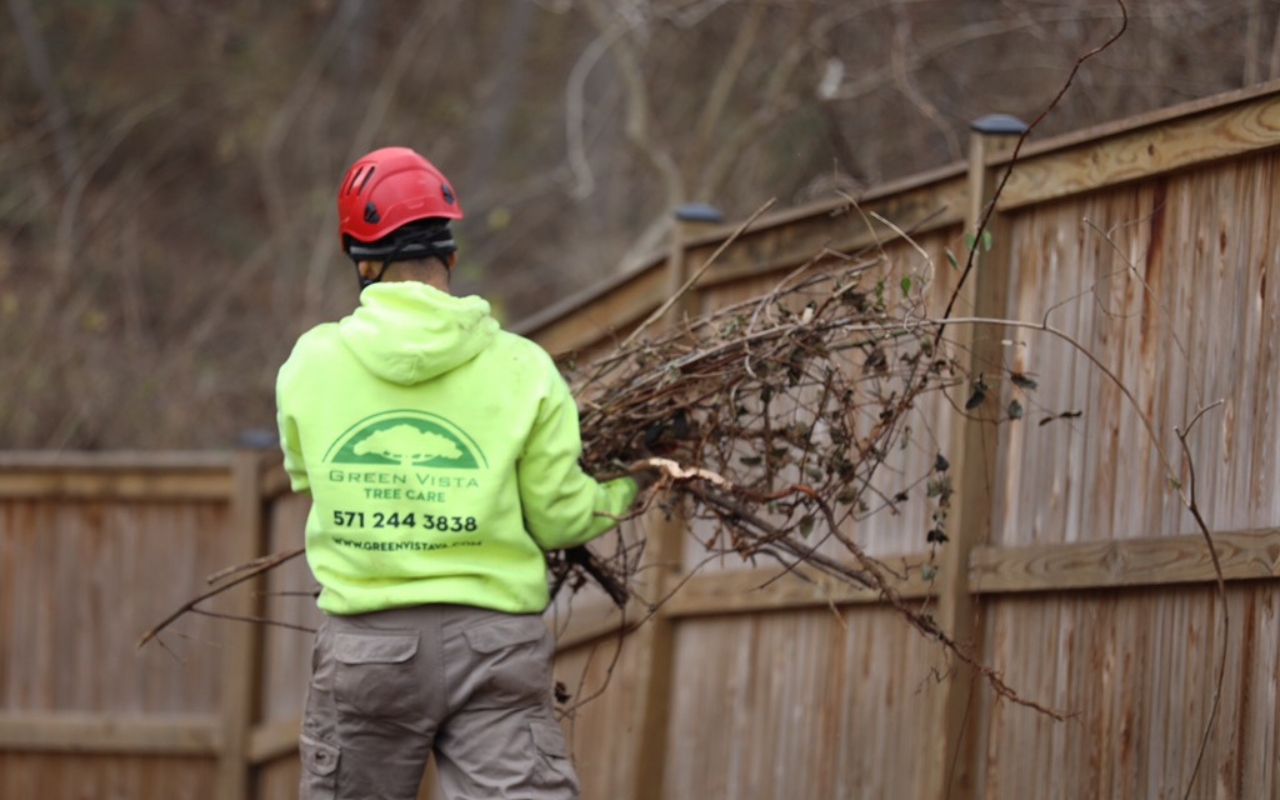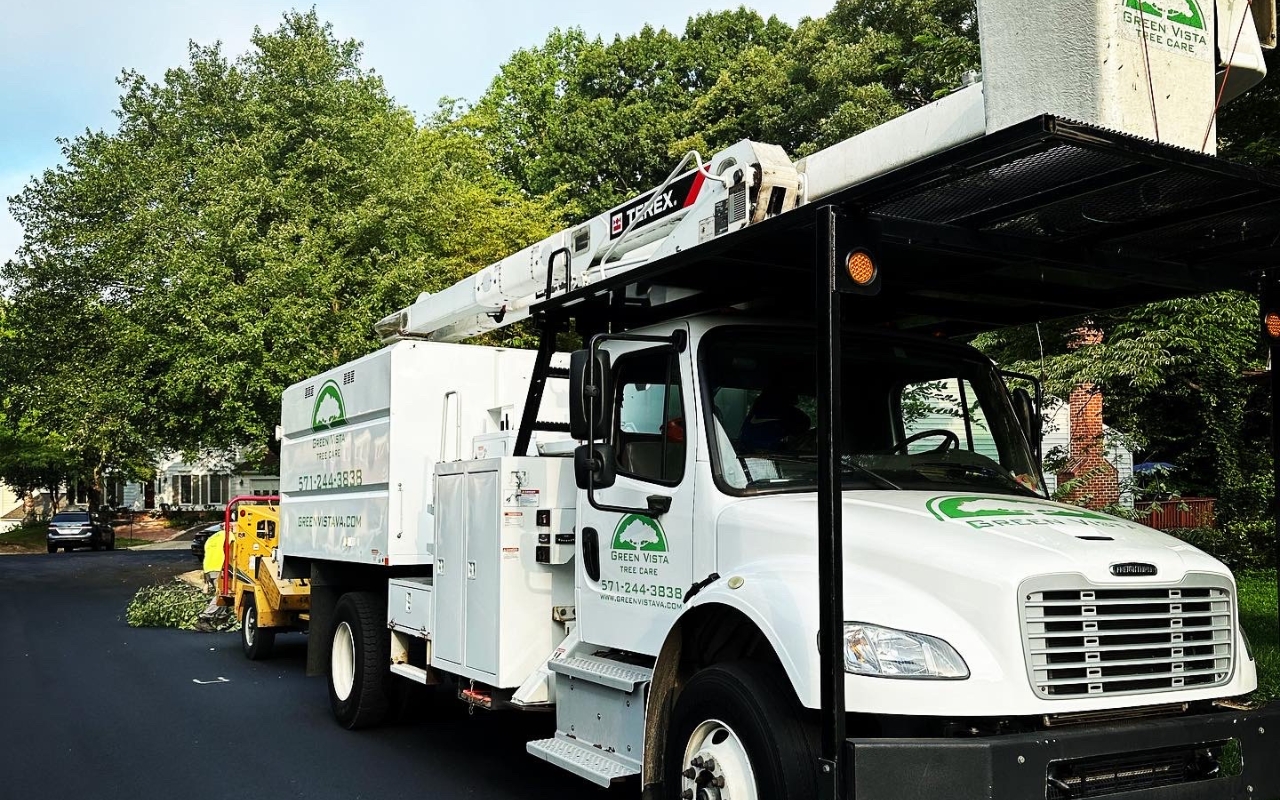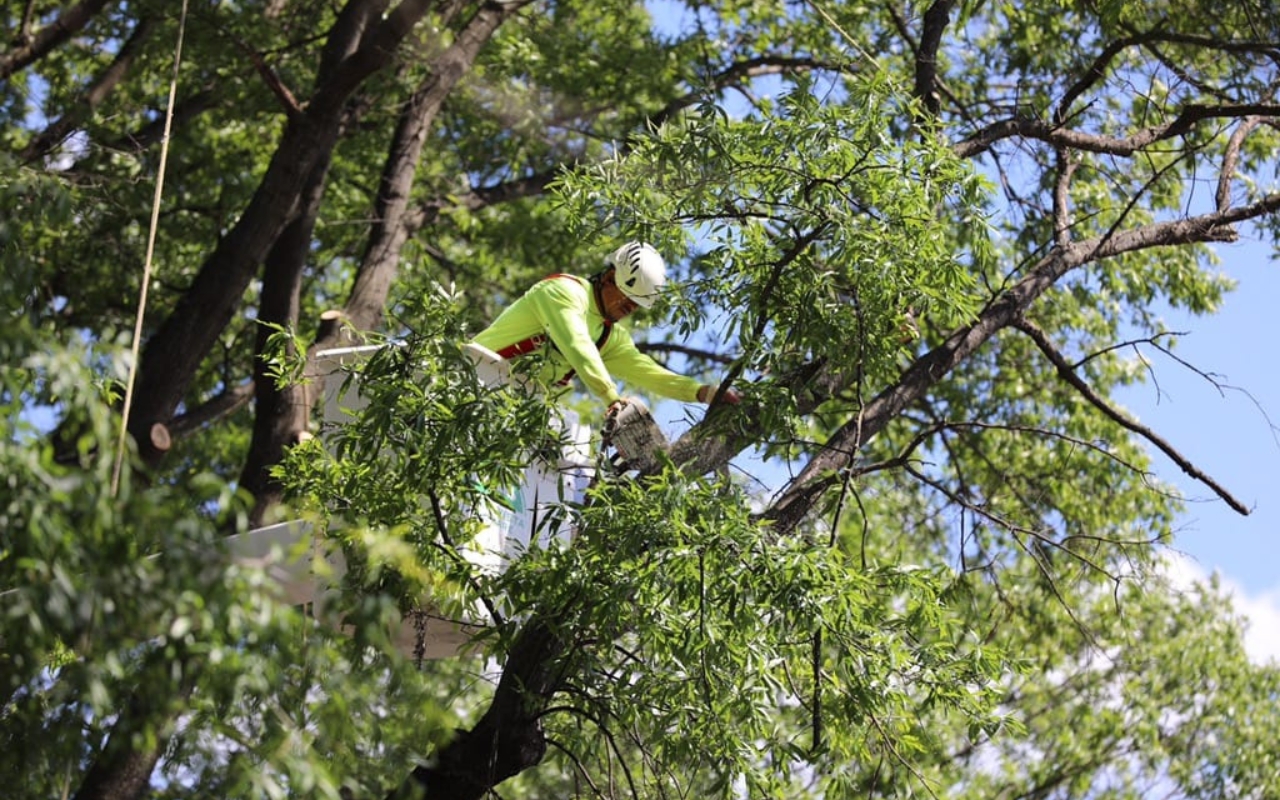Many of us in Northern Virginia, such as those in Arlington and Alexandria, live in urban areas close to our neighbors and their trees. As trees grow, they may begin encroaching on another person’s property. Our team at Green Vista is constantly fielding calls and questions about what to do when your neighbor’s trees are overhanging onto your property.
In this article, we will examine who is responsible for a tree infringing on your property. We’ll explore precedents, your legal right as a homeowner, and what you can do after an accident.
Key Takeaways
- Legal precedent for trimming your neighbor’s trees that overhang on your property in Northern Virginia comes from the 2007 case in the Virginia Supreme Court, Fancher v. Fagella.
- You have a legal right to prune an overhanging and overgrown tree up to the property line at your own expense.
- You can request the court to order your neighbor to prune their trees if they pose a nuisance or danger to your property by causing or threatening to cause damage.
- If a neighbor’s trees cause damage to your property through negligence, you may have a legal right to file a claim.
- To avoid having your tree damage your neighbor’s property, have a tree care company perform regular pruning, and always choose an appropriate tree for your space.
Frequently Asked Questions About Trimming Your Neighbor’s Trees
Dealing with trees that encroach on your property is problematic because it isn’t always clear who is responsible for the tree. We’ll answer all your questions about your legal rights regarding overhanging trees.
What precedent governs trimming a neighbor’s tree?
The modern precedent for overhanging trees and your legal rights regarding them dates back to a 2007 case in the Virginia Supreme Court, Fancher v. Fagella.
The case involved Richard A. Fancher suing Joseph B. Fagella, owners of adjoining townhouses in Fairfax County. Fancher filed the suit because he considered a large sweet gum tree on Fagella’s property a nuisance. The tree’s roots were damaging Fancher’s retaining wall and patio pavers, as well as depositing leaves and branches onto Fancher’s roof. Fancher wanted the court to force Fagella to remove the tree.
Can I force my neighbor to prune overhanging trees?
In Fancher v. Fagella, the court ruled that you may get the court to impose tree trimming on your neighbor when a tree becomes a nuisance. In the court’s decision, a tree becomes a nuisance to a neighbor’s property when it causes actual harm or threatens to cause harm to the property. Some examples of a neighbor’s trees potentially causing damage to your property could include:
- The tree’s roots damage underground pipes or paved surfaces
- The tree’s branches damage the roofing or siding of a house
- The roots damage your fence
- Weak, dead, or diseased branches can break off of a tree and damage your lawn, roof, or decorations
Can I trim my neighbor’s trees if they overhang on my property?
Virginia law allows you to trim a neighbor’s tree that overhangs your property up to the property line at your own expense. Excessive pruning can damage a tree and cause it to become hazardous and unhealthy. Always responsibly prune a tree instead of just cutting the entire tree to the property line.
What can I do about tree roots invading my property?
Fancher v. Fagella also allows neighbors to prune roots encroaching on their property at their own expense. As with overhanging branches, the court won’t compel someone to prune roots unless they are actively damaging or threatening to damage the property.
As with canopy pruning, excessive root pruning could kill a tree, especially if the tree is very close to the property line and could be subject to removal of half its root area.
DID YOU KNOW?: Tree roots are naturally opportunistic and rarely damage a foundation or underground pipes without an underlying structural weakness. Learn more about how tree roots cause damage in our previous article on the topic.

A member of our team at Green Vista cleaning up branches after trimming a tree.
Can I trim a neighbor’s tree if its leaves or fruits land in my yard?
Virginia law only allows you to trim someone’s trees if they overhang on your property. You cannot prune a tree or have the court order the owner to prune it if its fruit or leaves blow onto your property, as these are not considered a nuisance by the court.
Similarly, a tree shading your property isn’t enough to force a neighbor to prune a tree.
What happens if my neighbor’s trees overhang and cause damage to my property?
If a neighbor’s overhanging tree damages your property, you can file a claim against the neighbor. Every homeowner has a duty to protect a neighbor’s land from tree damage. The court may order your neighbor to compensate you for damage caused by branches or roots and remove the tree’s offending parts.
If parts of your neighbor’s tree harm your property during a storm, such as a branch blowing off and breaking a window, you likely won’t be able to take any legal action. If a tree is properly maintained and you cannot prove negligence, you may be responsible for paying for repairs through your homeowner’s insurance.
How can I avoid my trees damaging my neighbor’s property?
To avoid being on the other end of a lawsuit for tree damage, we recommend a few techniques to prevent tree damage to your neighbor’s property:
- Strategic pruning: Pruning can train a tree to grow a certain way. Hiring an arborist to prune and train your trees regularly in the early stages of their development can help prevent them from growing into a neighbor’s yard and causing problems.
- Planting proper trees for the space: While many dream of having majestic shade trees in their yards, this isn’t always possible. We believe in growing the right tree in the right place. Consult an arborist on the size of a tree at maturity before planting.
Should I hire a tree care company to prune my neighbor’s trees?
For trees with a few smaller branches close to the ground, you may be able to handle pruning on your own. However, in many instances, pruning is dangerous and requires the deft hand of a professional. Some of the cases in which you should hire a tree care company to handle pruning your neighbor’s overhanging trees include:
- The branches are high in the air
- You don’t have the right equipment
- You don’t know how to make proper pruning cuts
- You don’t have a way to dispose of the debris

Our team at Green Vista has equipment, like this bucket truck, that makes tree trimming easier and safer than handling it yourself.
Green Vista Can Help With All Your Tree Trimming Needs
If you’re willing to cover the cost, Virginia law allows homeowners to prune a neighbor’s tree branches or roots that extend onto their property. If a neighbor’s trees are a nuisance and threaten to damage your property, you may be able to ask the court to compel your neighbor to trim them.
Need help trimming an overhanging tree? Our team at Green Vista can help. We will efficiently prune the trees and limit the property damage risk. Call us at 571-244-3838 or request a free quote online to get started with your tree care today.
Get helpful tips, local news, inspiring stories, and more delivered right to your inbox every month. Don't miss another issue - join today!






